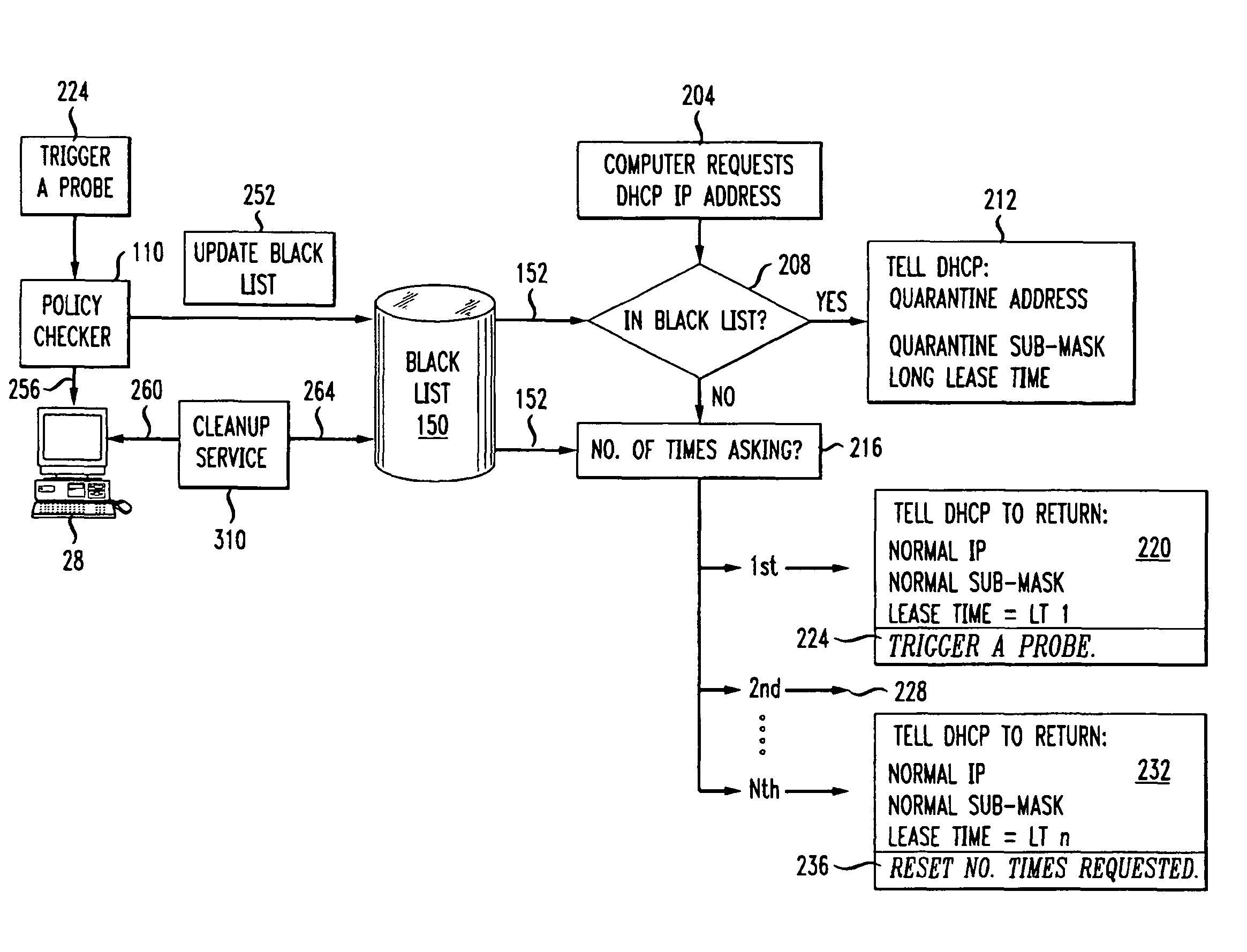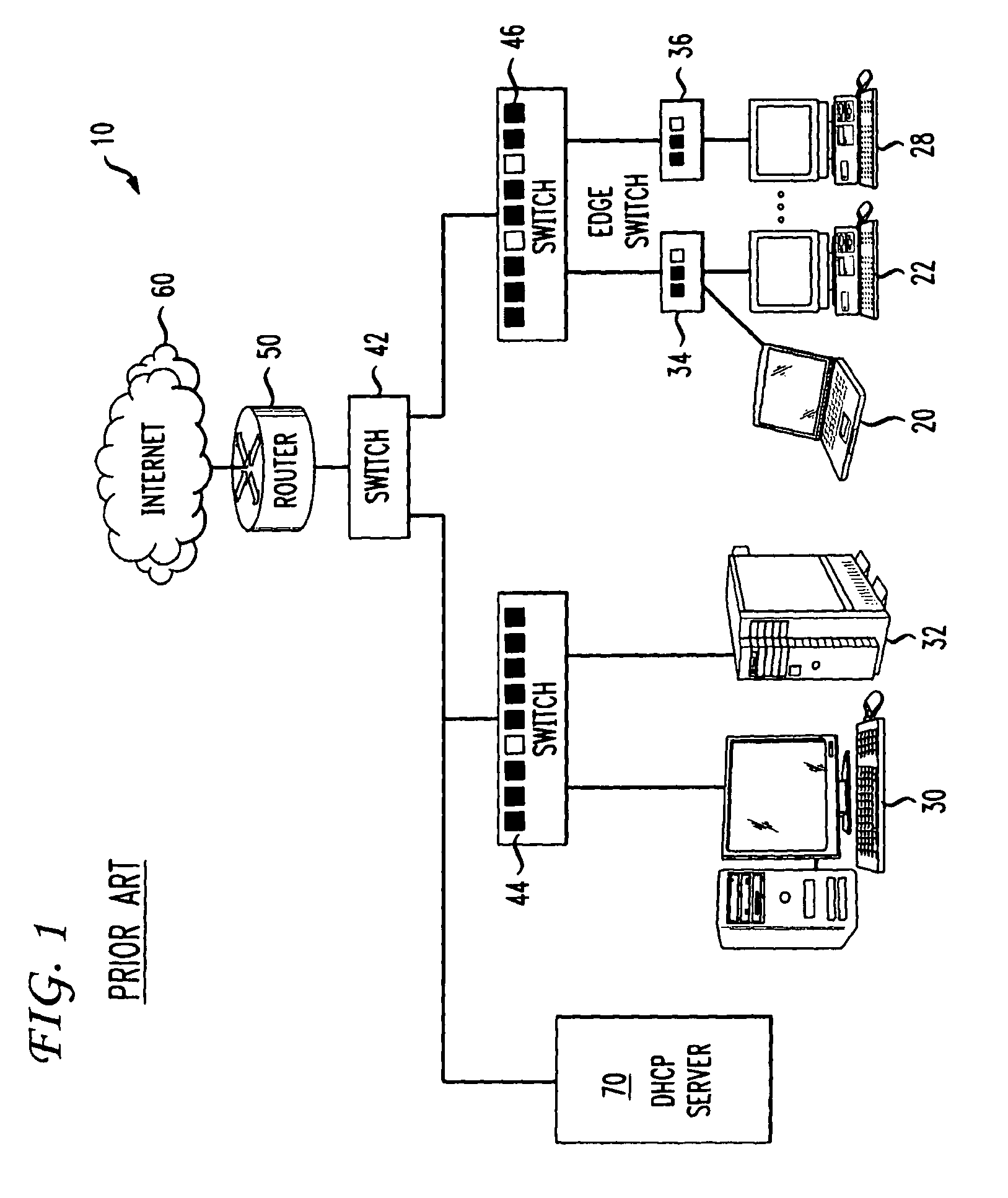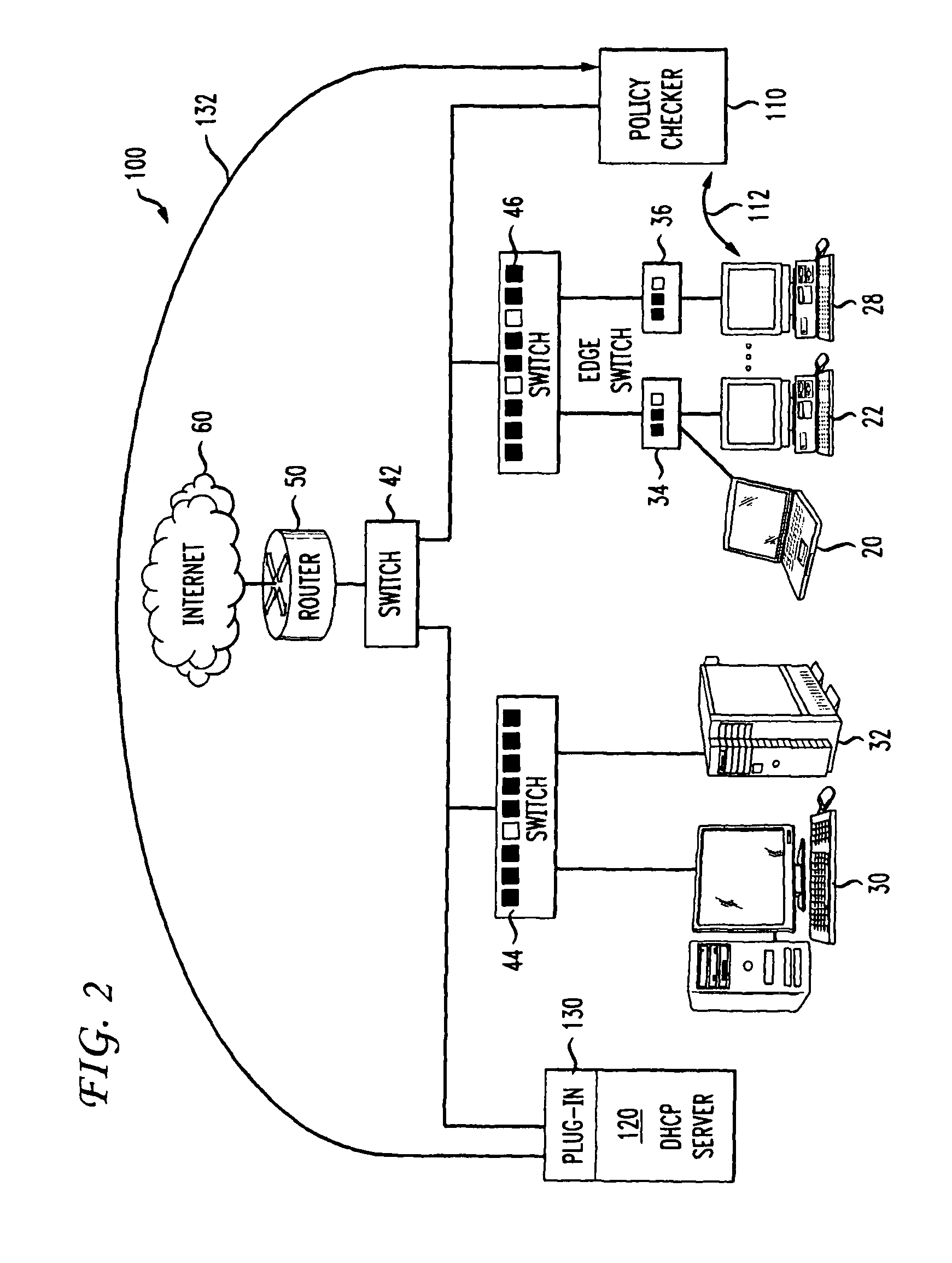DHCP-based security policy enforcement system
a security policy and enforcement system technology, applied in the field of security policy implementation, can solve problems such as computer network risk, complex, expensive and time-consuming, and users who might not even know that their computer is infected
- Summary
- Abstract
- Description
- Claims
- Application Information
AI Technical Summary
Benefits of technology
Problems solved by technology
Method used
Image
Examples
embodiment
Flow Diagram Embodiment
[0039]FIG. 7 is a flow diagram illustrating one embodiment by which the plug-in module 130 enforces compliance within the computer network. In this embodiment it is assumed that most computers will be in compliance with the security policy and thus there is no need to automatically quarantine a computer when it first joins the network. Optionally, it would be possible to assume that any new computer is not in compliance or is infected with a computer virus and then automatically quarantine that computer. This approach, though, creates more overhead for the network and makes it more difficult for a user first joining the network to get any work done. By assuming that most computers will be in compliance, and then initially assigning a very short lease time, the present invention reduces overhead yet allows a security policy check to be performed straight away.
[0040]In step 204 a computer (such as computer 28) requests an IP address from DHCP server 120. The req...
PUM
 Login to View More
Login to View More Abstract
Description
Claims
Application Information
 Login to View More
Login to View More - R&D
- Intellectual Property
- Life Sciences
- Materials
- Tech Scout
- Unparalleled Data Quality
- Higher Quality Content
- 60% Fewer Hallucinations
Browse by: Latest US Patents, China's latest patents, Technical Efficacy Thesaurus, Application Domain, Technology Topic, Popular Technical Reports.
© 2025 PatSnap. All rights reserved.Legal|Privacy policy|Modern Slavery Act Transparency Statement|Sitemap|About US| Contact US: help@patsnap.com



